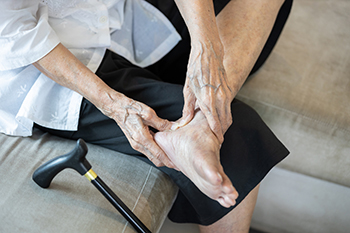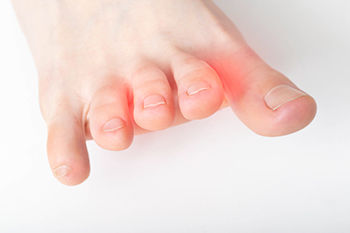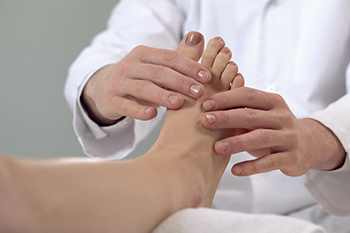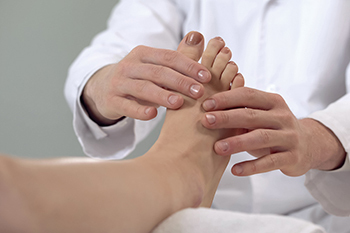
One of the things many pregnant women complain about is foot pain. Foot pain often worsens as the pregnancy progresses, but this is quite common and normal. Swollen ankles are prevalent during pregnancy due to the extra fluid the body carries to support the baby. The blood becomes thicker, and the growing fetus will cause the glands to produce more hormones. The feet endure extra pressure as the mother’s weight increases, so it is suggested to elevate the legs as frequently as possible. This may help provide mild relief from foot pain. The arch may flatten as the feet endure the additional weight, which may put pressure on the plantar fascia. This is the band of tissue that connects the toes to the heels and when it becomes inflamed, plantar fasciitis could result. If you have foot pain and would like to learn more about various relief methods, please consult a podiatrist who can help you during your pregnancy.
Pregnant women with swollen feet can be treated with a variety of different methods that are readily available. For more information about other cures for swollen feet during pregnancy, consult with one of our podiatrists from Foot Health Center of Merrimack Valley. Our doctors will attend to all of your foot and ankle needs.
What Foot Problems Can Arise During Pregnancy?
One problem that can occur is overpronation, which occurs when the arch of the foot flattens and tends to roll inward. This can cause pain and discomfort in your heels while you’re walking or even just standing up, trying to support your baby.
Another problem is edema, or swelling in the extremities. This often affects the feet during pregnancy but tends to occur in the later stages.
How Can I Keep My Feet Healthy During Pregnancy?
- Wearing orthotics can provide extra support for the feet and help distribute weight evenly
- Minimize the amount of time spent walking barefoot
- Wear shoes with good arch support
- Wear shoes that allow for good circulation to the feet
- Elevate feet if you experience swelling
- Massage your feet
- Get regular, light exercise, such as walking, to promote blood circulation to the feet
If you have any questions please feel free to contact one of our offices located in North Andover, and Tewksbury, MA . We offer the newest diagnostic and treatment technologies for all your foot and ankle needs.















